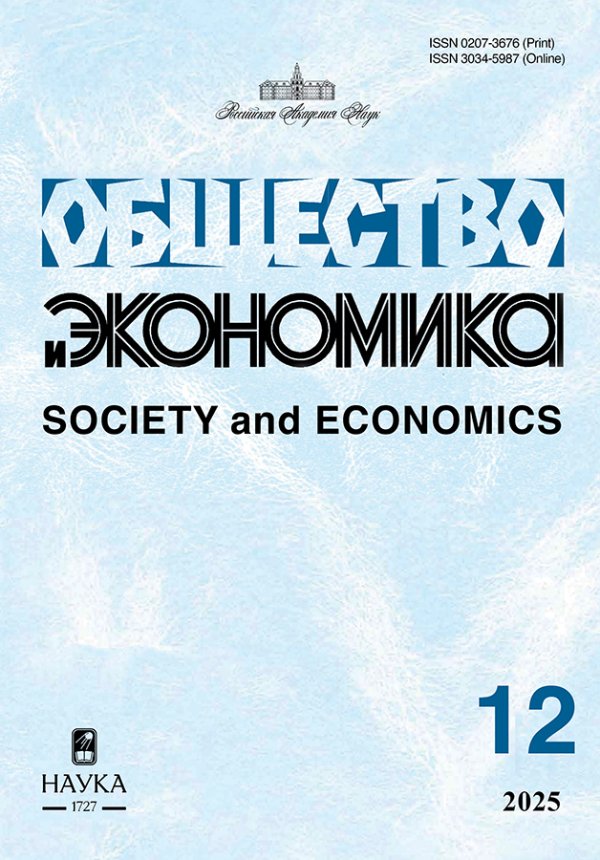Economic Inactivity and Assessment of the Economic Burden of the Population in the Regions of Russia
- Authors: Nanavyan A.M.1
-
Affiliations:
- Central Economics and Mathematics Institute, Russian Academy of Sciences
- Issue: No 7 (2023)
- Pages: 22-36
- Section: Articles
- URL: https://journals.rcsi.science/0207-3676/article/view/142815
- DOI: https://doi.org/10.31857/S020736760026571-7
- ID: 142815
Full Text
Abstract
About the authors
Ashkhen Mardirosovna Nanavyan
Central Economics and Mathematics Institute, Russian Academy of Sciences
Email: socpol@mail.ru
Russian Federation, Moscow
References
- Баскакова М.Е. Потенциальная рабочая сила современной России: социально-демографический портрет и уровень образования / Социально-трудовые исследования. 2022;48(3):105-117. doi: 10.34022/2658-3712-2022-48-3-105-117.
- Варшавская Е.Я., Денисенко М.Б. Экономически неактивное население России: численность, динамика, характеристики // Социологические исследования. 2015. № 5. С. 42–51.
- Колесникова О.А., Маслова Е.В., Околелых И.В. Проблемы трудовых ресурсов: дефицит, сдвиги в структуре, парадоксы старения / Социально-трудовые исследования. 2022; 47(2): 42–55. doi: 10.34022/2658-3712-2022-47-2-42-55.
- Ляшок В.Ю. Недоиспользование трудовых ресурсов: рост потенциальной рабочей силы / Экономическое развитие России. 2020; (3): С. 62–65.
- Нанавян А.М. Безработица в России: риски и экономические последствия / Экономическая наука современной России. № 4 (39), 2007. С. 70–78.
- Нанавян А.М. Экономически активное население: оценка экономической нагрузки / Концепции. №1-2 (28-29), 2012. С. 45–51.
- Перова М.Б. Экономически неактивное население / Социальные и экономические системы. Экономика. 2021. № 2. С. 140–154.
- Российский статистический ежегодник. 2022: Стат.сб./Росстат. // М., 2022. – 691 с.
- Рабочая сила, занятость и безработица в России (по результатам выборочных обследований рабочей силы). 2022 / Стат.сб./Росстат // M., 2022. – 151 c.
- Обследование рабочей силы (обследование по проблемам занятости населения). Федеральная служба государственной статистики России, 2000-2022 годы − gks.ru
- Национальный статистический комитет Республики Беларусь URL: https://www.belstat.gov.by/
- Национальное статистическое бюро, Республика Казахстан. URL: https://www.stat.gov.kz/
- Статистическое агентство при Президенте Республики Узбекистан. URL: https://stat.uz/en/
- International Labour Organization. ILOSTAT [Электронный ресурс]. URL: https://ilostat.ilo.org/
- Persons outside the labour force: How inactive are they really? / URL https://www.ilo.org/global/statistics-and-databases/publications/WCMS_714359/lang--en/index.htm










